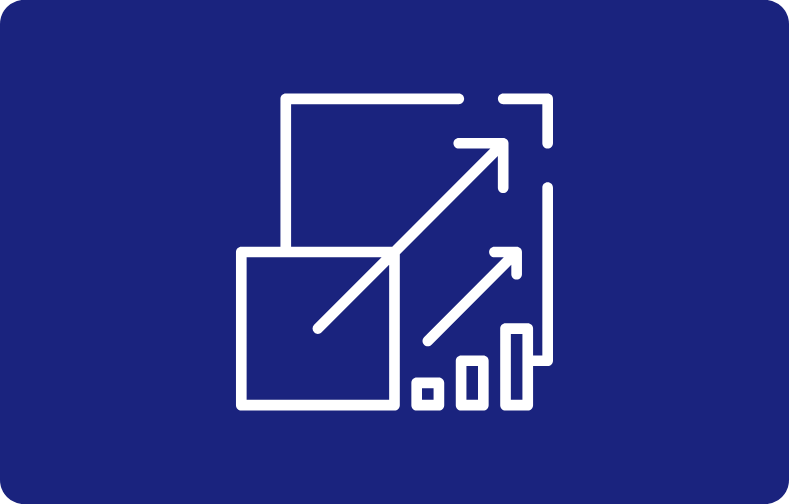The Difference Between Cores and Threads: A Smart User’s Guide
Cores and threads have a very different meaning in computer hardware than they do in real life. So forget your apple cores and clothing threads and discover how these essential computer processing unit (CPU) fundamentals impact your computer’s ability to multitask.
CPUs are the brain of the computer
Computers are made of hardware that runs software, which allows us to perform tasks that far outpace the capabilities of a human brain. A computer can calculate the square root of a quintillion-digit number in under a second - a feat which is naturally unmatchable by human effort. The CPU is what performs that calculation.
The processor, which contains a central processing unit (CPU), is the pulsating brain of any computer, be it your laptop, a giant server, your phone, or even your smart TV. This hard-working physical processing unit performs the functionality of the majority of the “work” on your device. It’s the physical hardware component that your computer can’t live without.
While some devices include a CPU in a different form, for example, a microprocessor or System-On-A-Chip (integrated CPU), a CPU-type physical processing unit must exist for your device to perform work.
Functions of the CPU and related hardware
The functions performed by the CPU include:
- Running instructions from computer programs
- Performing calculations
- Passing data to and from other system components
There are many other hardware components within a computer that perform other functions. Here are a few that you might be familiar with:
- RAM: Random Access Memory is a temporary memory storage unit used for performing complex tasks while your computer is running. When the computer is switched off, this memory is lost.
- Cache: Similar to RAM, but a lower-level memory with often-used instruction sets, so the CPU can perform calculations even faster than when it utilizes RAM.
- Storage: The persistent memory storage that allows you to store data even when the computer is switched off, for instance, a Solid State Drive (SSD).
- Bus: A carrier system that moves data between other hardware components.
- Motherboard: The board that houses and connects all these hardware components, and can connect other hardware like peripherals, power source, USB receivers, etc.
A note on CPU architectures
The two main CPU architectures that exist today are x86 and ARM. The type of architecture of your CPU influences how cores and threads are used and operate on the device.
When we talk about CPU cores and threads, we are typically discussing CPU chips with x86 architectures. While ARM CPU architectures also have cores and threads, they have a different history and methods of operation and interaction.
Keep in mind that this article will mainly discuss x86 architectures. The main producers of x86 chips are Intel and AMD, and are found inside most Windows computers. Apple has ARM architectures on their M-series chips (e.g., M3, M4), and Windows also has an alternative ARM series.
How does a CPU core work?
In traditional computing, a CPU has one core. That means one single central processing unit on one processor chip on the motherboard.
Back in the early days of computing, this single CPU could only execute one instruction or operation at a time. This type of CPU is like a checkout operator. They can only service one customer at a time. A queue forms behind, and the customers wait patiently in line until it is their turn.
How can we make the CPU work harder?
Many decades ago, people realized this type of waiting for attention at the computer checkout was inefficient; they wanted to be able to perform multiple jobs at once. The next upgrade to the CPU for doing more work was the concept of time-sliced multitasking.
Time-sliced multi-tasking is when the CPU handles multiple jobs at once, but just dedicates a small slice to each task, either in a round-robin approach, via priority scheduling, or some other scheduling algorithm. You could think of this as a checkout operator who is also making announcements over the loudspeaker in between servicing customers: “Strawberries at two-for-one in the produce section.”
But hey, we want to enable the computer to do more tasks at the same time, don’t we? That’s where threads come in.
How does a CPU thread work?
Threading allows a CPU to perform two jobs truly simultaneously, which is known as parallel processing. The first type of commercial CPU threading was in the early 2000s, with a technology known as simultaneous multithreading, or hyperthreading.
Simultaneous multithreading is actually virtualized CPUs on one CPU. So, you have a hardware CPU, and on that hardware CPU, you have two separate, logically defined, virtual CPUs.
This way, the CPU can now perform true parallel processing, rather than doing two jobs at once, but at the same time as it would take to perform those two jobs one after the other. Now, both jobs can be performed concurrently, saving time, so long as there is enough processing power on the physical CPU to do both tasks.
If our checkout operator is amazing at their job, they can check customers out in two lanes at once, scanning items and taking money on each side. It’s still one person, but now they’re doing the job of two people simultaneously.
Single core vs dual core vs multiple cores
Now we have the ability to perform multiple tasks at the same time on one CPU. That’s great, but it’s still not enough. We want our computers to perform many tasks, and we don’t have time to wait.
Next in our CPU history is the dual-core CPU. Not long after simultaneous multitasking on a single-core CPU was released to market, hardware manufacturers thought, “Hey, what’s better than one CPU? More cores!”
Thus the dual-core CPU was born, with two physical cores on one chip: the first multi-core processor. This now meant that there was no need to share underlying resources: two dedicated chips could work in parallel, completing multiple tasks without sharing a single-core processor.
In our simulated grocery store, they added another checkout operator, so that there are now two people working at once.
Multi-core CPUs became the default. If you didn’t have a multi-core CPU, then your single-core processor machine was noticeably slower than others. Then came multiple CPU cores: 4, 8, 16, 24 cores on a chip for many more multiple tasks.
CPU cores and threads
As you can see, both CPU cores and threads offer the ability for your machine to do more multitasking. But which is a better choice for your situation, more cores or more threads?
In modern computing, you’ll quite often have both: multiple CPU cores, each with multiple threads.
How many threads can one CPU handle?
In desktop computing, most CPU cores will only have a maximum of two threads per core. However, some CPU cores, especially in servers, can have many more multiple threads. Typically, it’s easier to add multiple cores rather than add further threads to a CPU, although these multiple-thread CPU cores do exist.
Are all CPU cores threaded?
Not all CPU cores are threaded. Even on a multi-core processor, you’ll often find a mix of threaded cores and non-threaded cores. This is a deliberate design decision to maximize performance while ensuring other considerations like power and cooling are also taken into account.
Over at Intel, they call their threaded cores Performance-cores, and the non-threaded cores Efficient-cores. So, for instance, on the Intel® Core™ Ultra 9 Processor 285T multi core processor, you have 8 threaded cores and 16 non-threaded cores. Their threaded cores run three threads each for a total of 24 threads, for a mix of 32 virtual cores and physical cores. That is a whole lot more cores for a whole lot of parallel processing power!
Different tasks are sent to different threaded or non-threaded cores, depending on the complexity and performance requirements of the task. High-performance tasks are sent to the performance-boosted cores, while background, low-level tasks are assigned to the efficient cores.
This mix of multiple cores and threads in multi core processors makes for greater efficiency in modern computing.
Does core count matter?
As the number of cores increased, other considerations needed to be made: greater cooling, more power, increased need for RAM.
In 2025, we’ve worked a lot of these issues out, but device manufacturers can still get it wrong. Multiple core devices can still overheat and shut down if they aren’t supported by the right surrounding hardware infrastructure, especially with full capacity workloads.
As a consumer, your core count matters in how much multitasking your machine can take on, and at what speed. Generally, the more cores, the better for speed, but that can come at the cost of power and cooling required.
Difference between CPU cores
The generation of the processor matters when it comes to core count. Newer chips, for example, Intel Core i7, are more efficient than their predecessors, like the Intel Core i5. If you have a quad-core processor with an i7, it’ll outperform the quad-core processor with an i5 in a heartbeat.
Modern software is built to run on modern machines, which means that a computer with a CPU from 10 years ago will struggle (or fail) to run a new application. Using new software with old CPUs means the performance requirements of the software will outstrip what’s possible with your old hardware.
With each new type of CPU comes new efficiencies, but it also affects the demands on other hardware components. Manually swapping out your own CPUs and keeping the same other hardware can have unwanted side effects.
How many cores is best?
The question of “How many cores is best?” is dependent on a few things:
- What workloads will your machine be running?
- Do you have power, battery, cooling, or other hardware constraints?
- What generation of CPU are you considering?
- What is your budget?
For example, choosing a laptop with the highest number of cores just because it’s available and “the best” won’t matter if you’re just using the browser and a spreadsheet app. Single core machines still exist, but they’re more common in small devices.
However, if you’re seeking to futureproof your machine, then choosing the latest generation of processor with more cores and threads will likely mean that your machine will last longer, as it will be able to run new software, even as its hardware ages. Scaling up is a good idea.
Similarly, if you’re performing a specific, intensive task very often, more CPU cores and threads may not even be the answer you are looking for in processing power. It may be the GPU instead.
CPU vs GPU cores
GPUs have been in the spotlight for several years, due to their use in machine learning (ML) workloads. However, the Graphics Processing Unit (GPU) has typically been used for high-performance gaming in the past. This is still the case, even as people offload their ML workloads to GPUs.
GPUs are even better at doing parallel processing than adding extra CPU cores or threads. A single GPU for a high-end desktop gaming setup will have thousands of operational cores. These multi-core processors are well beyond the bounds of CPUs.
So, why aren’t we using GPUs instead of adding extra CPU cores and threads in regular computing?
The answer is that the GPU is only capable of doing highly specific, repetitive tasks. The GPU is not like a brain. It’s like having thousands of hands. If your brain (the CPU) tells them to make sandwiches, you will have thousands of sandwiches.
Putting more GPU cores in your computer will not make generalized computing any faster. GPU cores can only be used for those extremely specialized tasks like graphics rendering, ML calculations, large-scale simulations, CAD modelling, and researching brute-force attacks.
CPU cores and threads are the powerhouse of a computer
CPU cores and threads make the magic behind modern computing come to life. It’s why we don’t have to make a cup of tea while our application loads. It’s why our machine doesn’t crash if we try to switch between applications performing different tasks.
The availability of multiple cores and multiple threads in machines will likely continue to grow as demands for high-power computing continue. And you can bet there will be no stopping the performance demands of modern software.







.webp)



